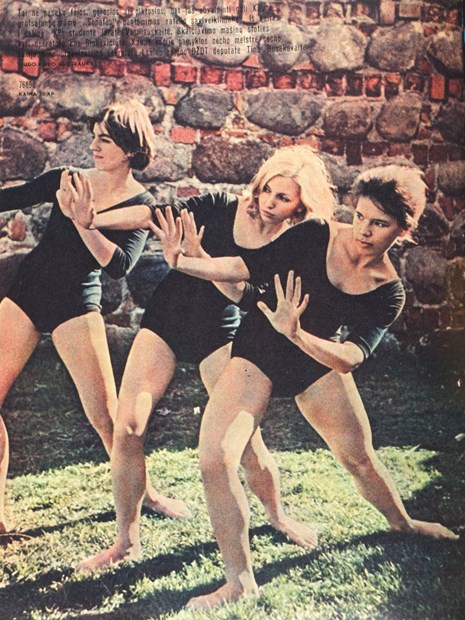A Place of Images

A Place of Images
Lithuanian Photography in Illustrated Magazines of the
1960s-70s
Illustrated periodicals are an important medium for the dissemination of photographic images that influences our experience of visual culture. In the Soviet times, both cultural publications like Nemunas or Kultūros barai and political/social affairs magazines like Švyturys, Tarybinė moteris or Jaunimo gretos published a lot of photographic images. Among the photographs published at the time were many works by some of the period's most renowned photographers who collaborated with the magazines, including Marijonas Baranauskas, Rimantas Dichavičius, Algimantas Kunčius, Vitas Luckus, Aleksandras Macijauskas, Antanas Miežanskas, Vilius Naujikas, Antanas Sutkus, Romualdas Rakauskas, Liudas Ruikas. The abundance of images in the pages of Soviet magazines suggests that at the turn of the 1960s and 1970s the official press was a major source of commissions for photographers. The increased demand for visual material coincided with substantial changes in Lithuania's photographic life: the newly emerged young generation of photographers produced and published increasingly memorable works, exhibitions were being held, catalogues were being published, and photographers themselves established a professional society, having thus created an institutional framework for legitimizing photography as an independent art form. In the context of these processes, photographers perceived collaboration with the official press as an opportunity to present their work and gain acclaim, rather than as serving the system.
Ideologically biased mass media were very rigorous in their selection of images to be made public. In the pages of the magazines, captions and texts bridled the semantic field of the photographs that had passed through the control filters. Photographer, filmmaker and theorist Allan Sekula stressed the dependence of the image's meaning on its embeddedness in a particular context, writing that "[...] the photograph, as it stands alone, presents merely the "possibility" of meaning. [...] Any given photograph is conceivably open to appropriation by a range of "texts," each new discourse situation generating its own set of messages." Thus, open as it was to diverse meanings and different readings, photography inevitably became co-opted by the system in creating the "Soviet man" when it found itself in the official press. On the other hand, as soon as in the 1960s-70s the same photographs were being included in albums hand-made by their authors and displayed in exhibition halls; in other words, they were also valued as works of art. In this way, they ended up in yet another context - that of the art field. Moving from one place to another, the same images changed not just their meanings but also their status, turning from photojournalism into art objects. Therefore it seems that in the context of changing circumstances only the images themselves remain stable and constant. It is to them that this exhibition is dedicated.
Curated by Ieva Mazūraitė-Novickienė
Architect: Audrius Novickas
Designers: Jurgis Griškevičius and Daiva Tubutytė
Exhibited works kindly lent by the Lithuanian Archives of Literature and Art
Exhibited magazines kindly lent by Algirdas Mataitis, Margarita Ramonienė, editorial office of Nemunas magazine
Exhibition supported by the Ministry of Culture of the Republic of Lithuania and Exterus company


